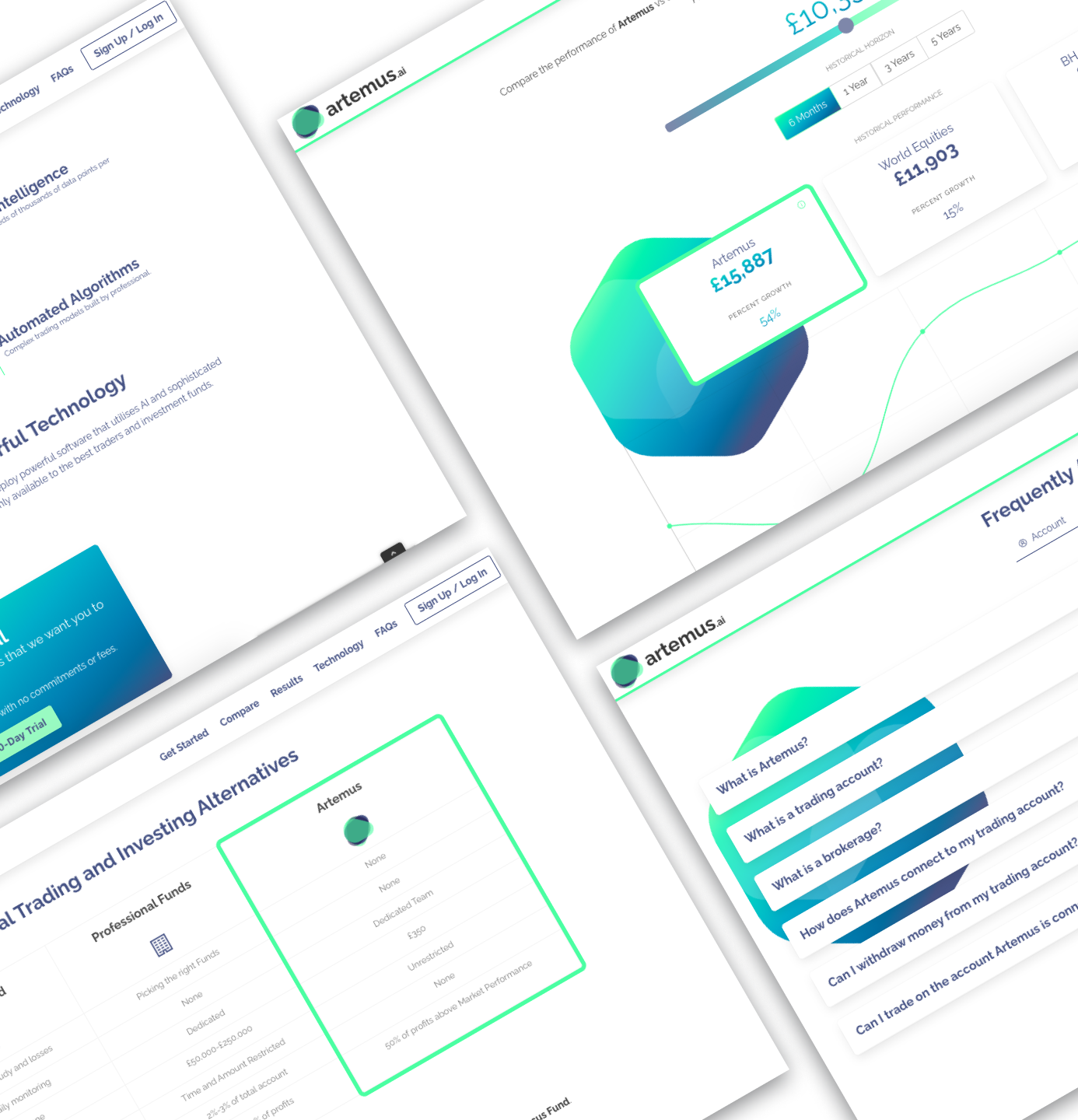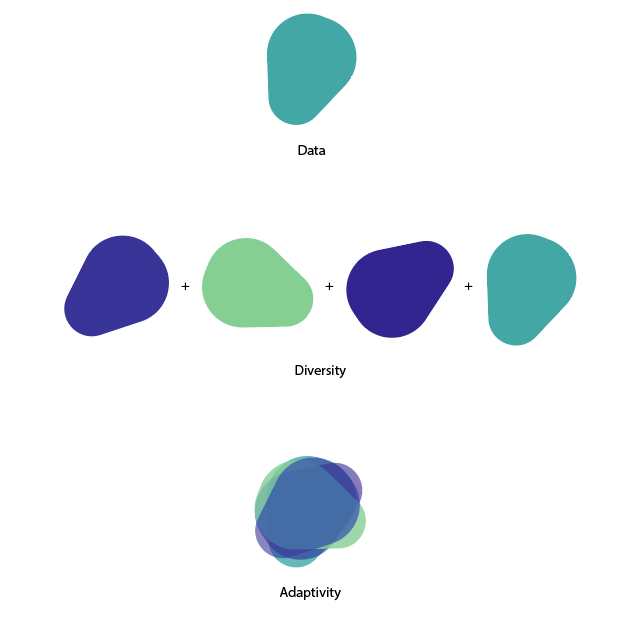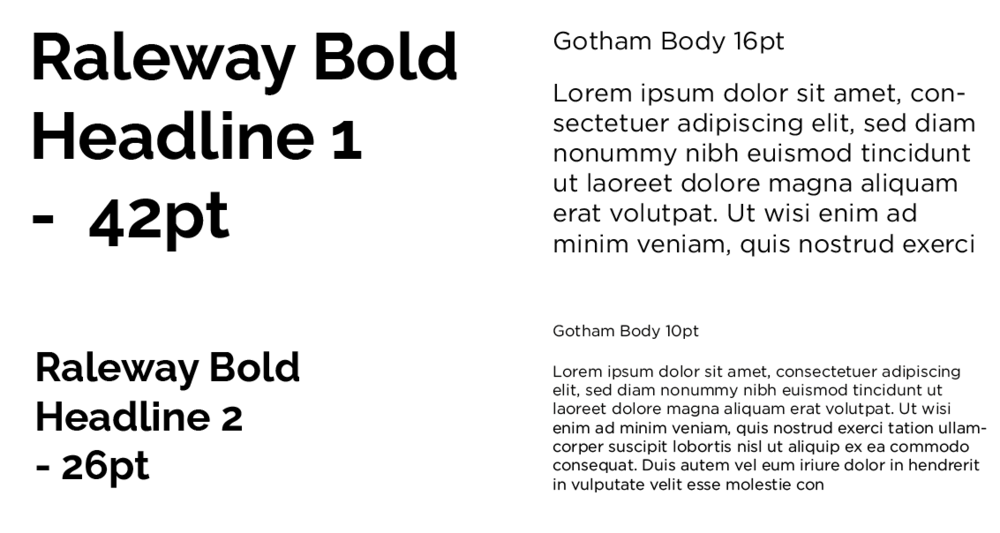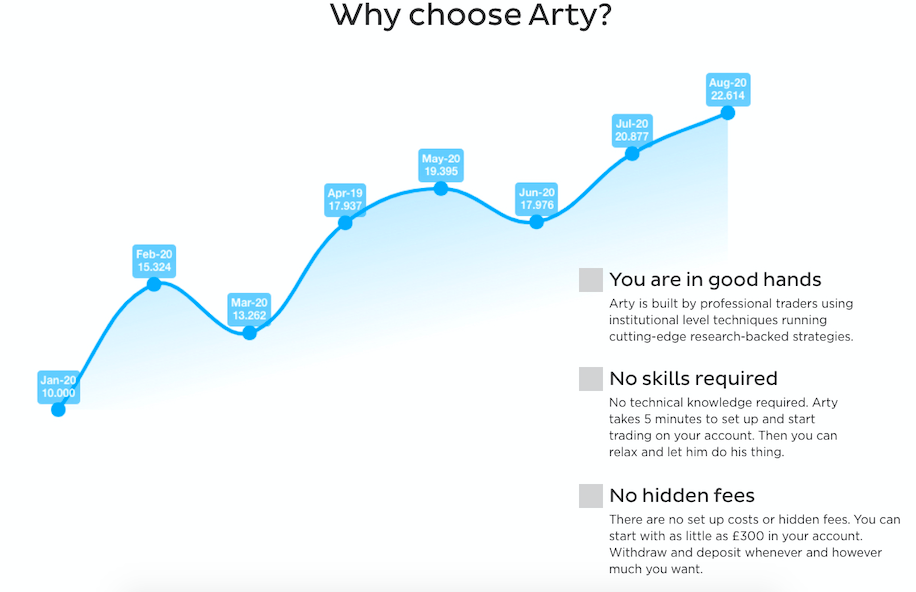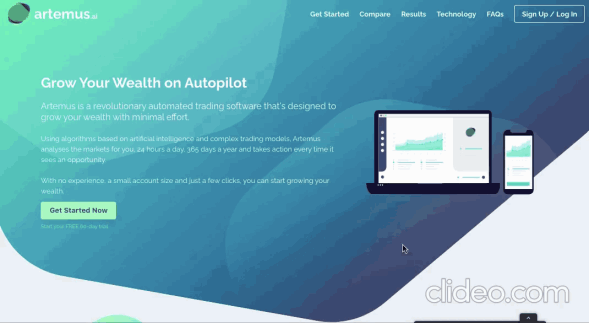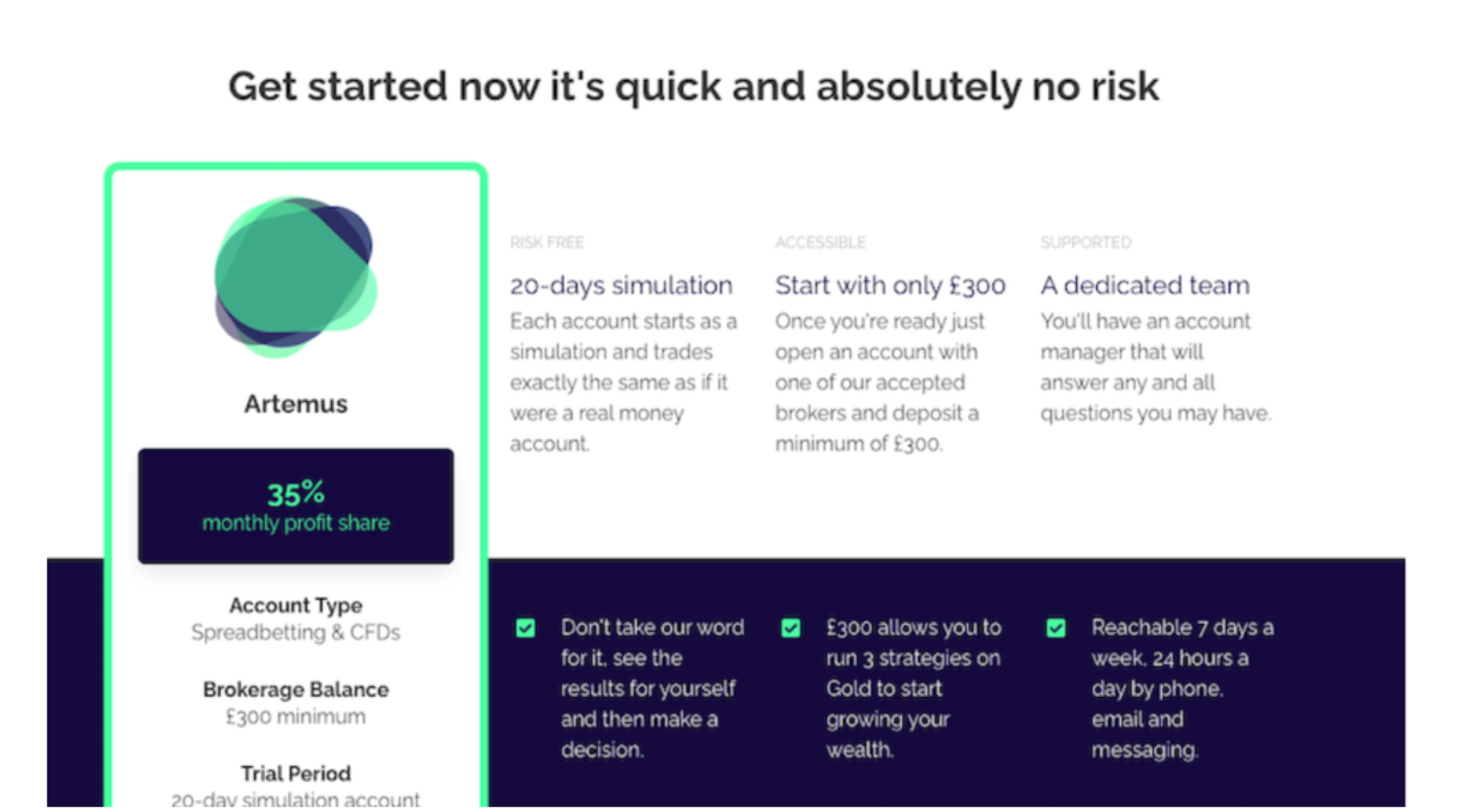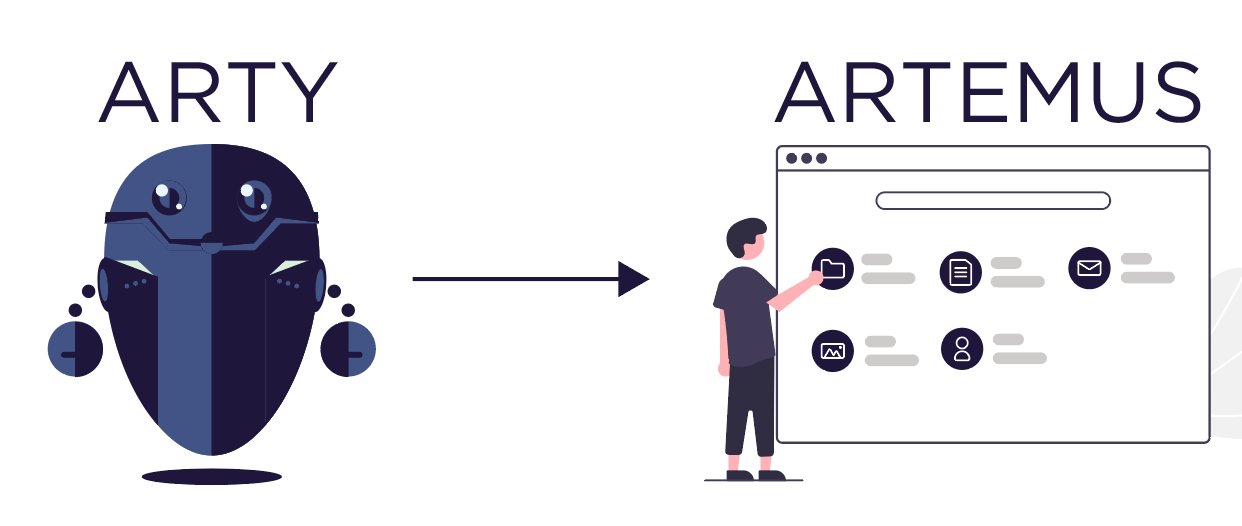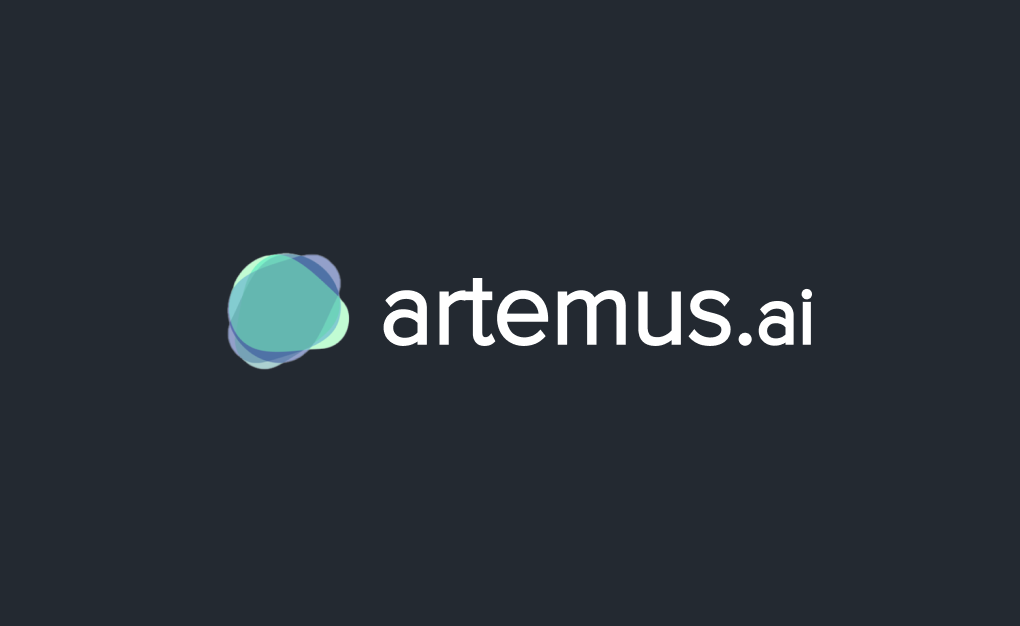artemus.ai
Introduction
Artemus is an AI-powered trading platform that automates investment strategies to help users grow their wealth with minimal effort. It uses sophisticated algorithms to trade on behalf of the user, allowing them to stay hands-off while the system operates continuously in the background. Designed to be accessible and trustworthy, Artemus offers a user-friendly interface that caters to people with little to no trading experience.
Research
& Testing
We run A/B tests with different landing page variations to understand what resonates most with users. In its early days, Artemus has no established branding and relies on a hosted CMS form to deliver its dashboard tool, which creates a disjointed and impersonal experience. Because of this, we focus heavily on rebranding—rapidly iterating the visual identity, refining the tone of voice, and designing a more cohesive, trustworthy interface from the ground up.
Evolution of Landing Page after several round of A/B testing
Ideation
Wireframing /Adobe XD / Sketch
During the ideation phase, we experiment with both light and dark modes to see which visual style feels more compelling and trustworthy to users. We test the impact of adding or removing CTAs across different sections, carefully observing how placement and frequency affect user flow. At the same time, we refine the data visualizations—adjusting how many graphs are shown at once, introducing interactivity through user inputs, and exploring light gamification elements to make exploring performance data more engaging and memorable.
… and fresh, bold colors that keep the brand feeling young, edgy, and distinctly tech-forward. This shift not only enhances the product’s visual appeal but also reinforces Artemus’s identity as a premium financial offering within London’s competitive fintech landscape..
Outcomes
Artemus.ai demonstrates how thoughtful design and user-centered strategy can transform a complex platform into an accessible, conversion-friendly experience. By replacing manual onboarding with interactive, data-driven guidance, Artemus not only scaled more efficiently but also built greater trust and engagement among new users.
One of the strongest insights from our research is the critical role data graphs play in shaping user perception and driving conversions. Users often form their first opinions of Artemus based on how performance data is presented—scrutinizing the numbers, questioning their accuracy, and comparing them to personal expectations or experiences. These graphs aren’t just decorative; they’re a trust-building tool. We find that clear, interactive visualizations of past achievements directly influence whether a user continues exploring the platform or drops off, making them a central focus in our design and testing process.
Strategy
Our strategy focuses on increasing conversions by offering real, verifiable data that users can interact with directly. The landing page experience is designed as a guided journey—each section building trust and interest, with a clear CTA always visible to encourage sign-up. This leads users to a free trial, where they receive a small amount of money in their account to test Artemus for themselves, lowering the barrier to entry and letting the product speak through experience.
We spend significant time refining the pricing plans, carefully testing different formats and UX language to clearly communicate value and guide users through choosing the right option. The plan structures and offers continue to shift based on user testing insights and evolving business goals, allowing us to stay flexible and responsive.
Published Landing Page
After finalizing the layout and gaining clarity on user behavior, we decide to expand Artemus’s business goals beyond the original trading tool. Having observed the competitor landscape over time, we begin positioning Artemus as a potential consultancy—one that could offer a broader suite of financial products powered by algorithms. To support this vision, we evolve the visual design by introducing gradients…
As we reflect on the progress of Artemus, one of the most compelling discoveries is how strongly users respond to the gamified features—particularly interactive data elements that make performance exploration feel engaging and personal. This insight leads us to lean further into gamification, and we begin envisioning a future where Artemus includes a bot-style trading dashboard that communicates with users in real time, offering updates, suggestions, and consistent validation throughout their journey.
Looking ahead, the goal is to build a strong, loyal client base through trust and product value, and then introduce additional services or tailored add-ons for those users. Over time, we plan to expand the Artemus domain beyond just trading—positioning it as a broader financial platform with intelligent tools and services, grounded in smart design and customer insight.
Reflection
/Next Steps
The Challenges
A core challenge at Artemus is guiding users through a seamless and confident onboarding experience. Many arrive curious but cautious, unsure how to trust an AI platform with their money. The task is to immerse them quickly—building familiarity from the first click, simplifying the sign-up process, and leading them naturally into the dashboard. As the platform grows to include multiple service tiers, the complexity increases, making it essential to design a journey that feels clear and effortless, no matter the user’s level of experience.
Another ongoing challenge is setting Artemus apart in a market filled with niche trading tools. New users often compare platforms side by side, so it’s crucial that Artemus tells its story visually and persuasively. Interactive data graphs showcasing past performance, clear benchmarks against competitors, and transparent metrics are key to building trust. These elements not only demonstrate Artemus’s credibility but also help potential users envision its value—turning interest into action without overwhelming them.


